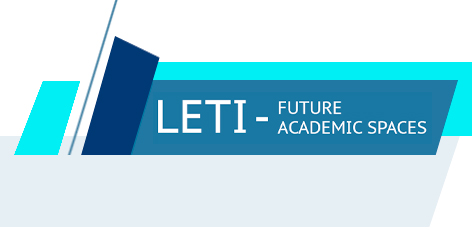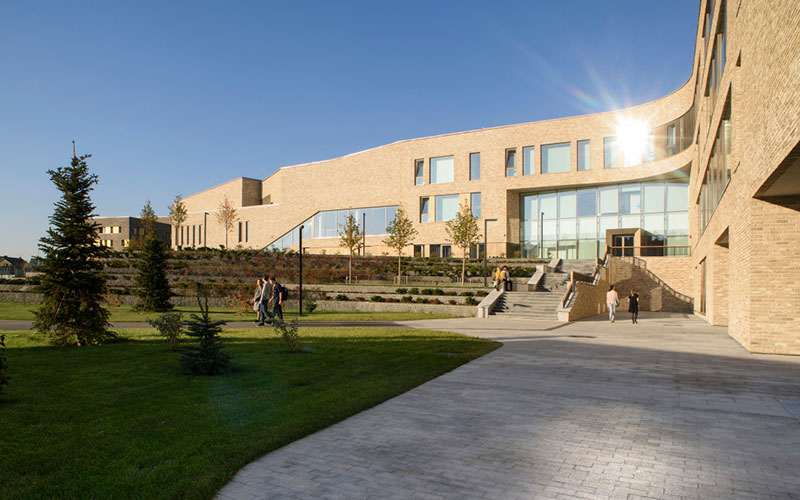
News

Pascale Leistra:
Message to LETI
In an interview, Dutch architect Pascale Leistra talks about approaches to campus development in the Netherlands and around the globe and how ETU “LETI” can use it to reinvent its public and learning spaces.
Pascale Leistra Leistra is a prominent Dutch architect who has vast experience in doing architecture and design projects for the 'knowledge industry' – universities, schools, libraries – in the Netherlands and other countries.
Pascale is a member of the international jury in the International Contest of Young Architects “LETI: Future Academic Spaces” aimed at transforming the four signature locations of its campus.

– What do Dutch universities consider as the campus development priorities?
– Major changes in campus developments today in the Netherlands are driven by the goal to motivate and guide students to develop their best intellectual, emotional and social potential. A university can provide this in making a stimulating, healthy and happy environment.
– And what are the Dutch tools to make students happy?
– Tools for that cover an endless range: from best digital infrastructures and a variety of learning spaces for stimulating co-working to serving good healthy food and delicious coffee for stimulating informal meetings.
One of the trends is co-working with partners like other universities, vocational schools and industries outside the own institute. This was underestimated for ages. Universities were more like solitary fortresses, but now they seem to come out of their fortress and find each other. That is also a very good thing about Nuffic Neso Russia: connecting people across borders.
– You studied in the TU Delft, where you teach now. What are the main differences between the student lifestyle then and now (2019-early 2020)? How much time students spent in the university (before Covid)?
– It has been some time ago when I lived and studied in Delft but when we go back to the '90s – have in mind that the EU Erasmus International Exchange program for students just started then with 4000 students, and now it has more than 1.5 million students.
We had the worst coffee from coffee machines in unattractive hallways. We had this poor Dutch lunch tradition of eating bread, and if you wanted to treat yourself to something better on Friday afternoon, there might be a social event up until 7 p.m., but generally, the university closed at 6 p.m.
Now there are interesting lectures by international speakers several times a week. More sports are established on the campus, as well as much more student apartments. Campus life goes on all around the clock.
Nowadays, there are very many students from different universities all over the world. There is this delicious coffee bar with espresso, americano, latte and even the automats in hallways have acceptable coffee. For lunch, you can choose between a weekly changing menu of vegetarian food, German sausages, Spanish omelet or else.
– What you can name as the most stable trend in the university development?
– Of course, it is sustainability in all its aspects. TU Delft's ambition is to be a CO2-neutral and circular campus in 2030, so buildings need to be adapted to that ambition energy-wise. At the Faculty of Architecture, this ambition is blended in all projects. All kinds of projects started on themes like affordable and clean energy, clean water, climate action and industry, consumption and production, awareness to sustainability by separating garbage, etc. The whole campus breathes a green, bikers-friendly, attractive environment.

– What is considered a top priority by global universities?
– As far as I can see, top universities worldwide want to have perfect circumstances for students to develop their capacities to the max. They want to work together with other sciences, act beyond disciplinary borders and in a global network.
– How and what do European universities with long biography and traditions change?
– During the years, opinions vary about the value of "a long history." The richness of a long history can function as a mantra for excellency which might, in the end, limit future developments. On the other hand, the young self-aware university that is fully focused on the future might lack some traditionally proven context.
As for historical buildings, there is this difference in highly-listed buildings which are so magnifique that everyone highly appreciates them. There is no doubt about their high valuation. But a majority of these historical buildings are outdated, non-functional and have low attractiveness; they feel more like a burden.
Therefore, until recently, it seemed that having new, fancy state-of-the-art new buildings was highly more desirable for universities than the old ones they have.
But this attitude has partly changed in latest years, because of some splendid examples of renovated and transformed buildings recently.
These examples also show that historical buildings with lower historical value can be transformed into dynamic attractive educational environments. This will make today's universities aware of the potential of their historical buildings and understand that they are not some kind of burden and can be transformed to meet the future.
– What is your advice to LETI?
– That would also be my message for LETI: you do have this unique, characteristic ensemble of buildings on a plot, in a very interesting urban context: preserve your diamonds attentively, make a new strategic masterplan for the future and have your diamonds perfectly fit in them. LETI, being this inspiring, unique environment, is ready for the future with this long tradition!